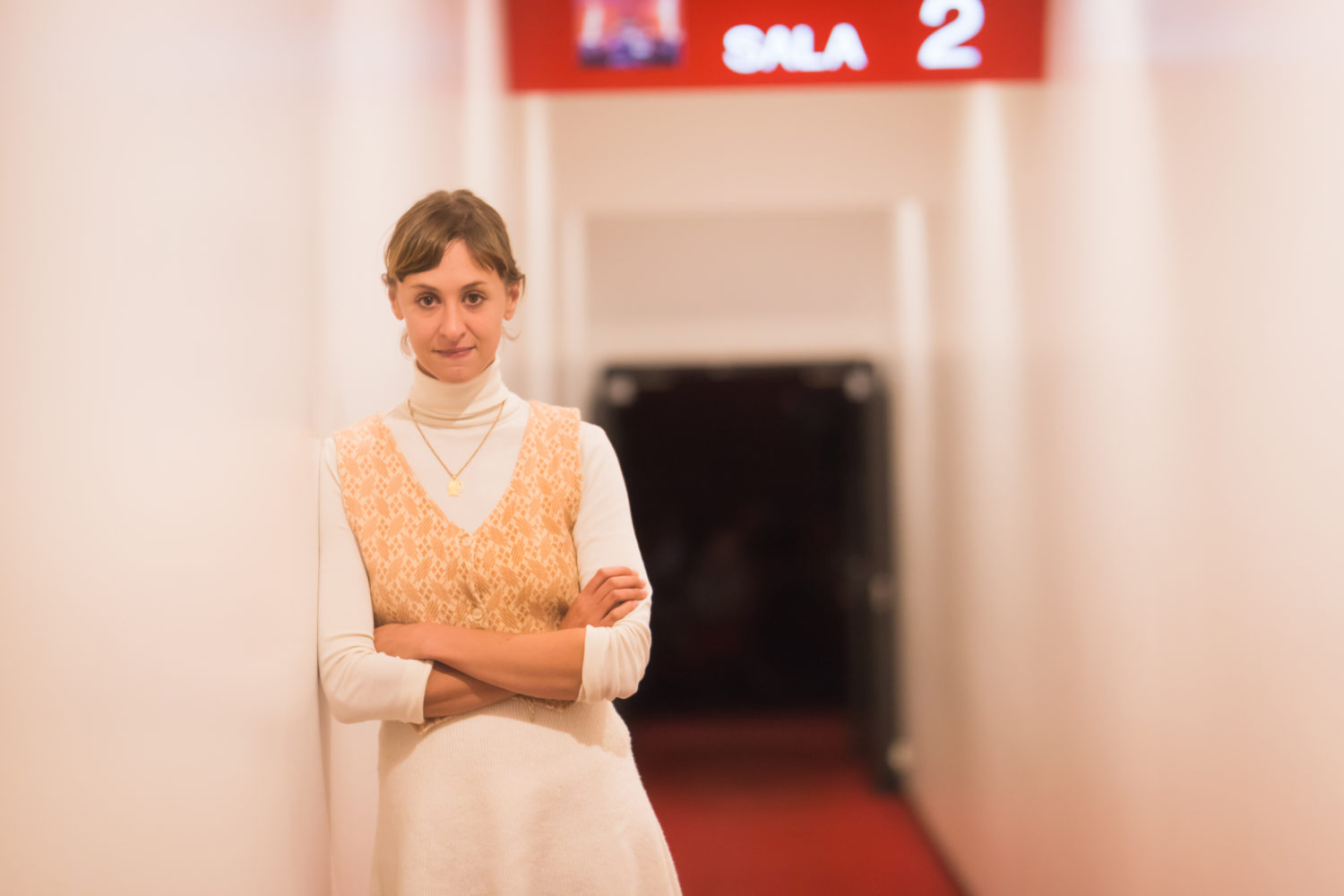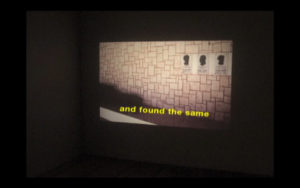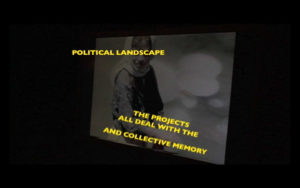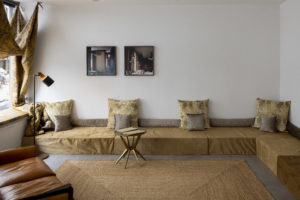Prix AWARE
© Galerie Imane Farès
“It is time for us to narrate our own story”: this phrase, taken from a statement made by the Palestinian doctor and activist Haydar Abd al-Shafi at the Madrid conference in 1991, can be heard in Basma al-Sharif’s video Everywhere Was The Same (2007). This statement embodies the dense and powerful project that drives the artist and her work, which consists of photography, video and film – presented in projections and installations – combined with sound works, texts, drawings, collages and furniture.
B. al-Sharif addresses the history of Palestine, life in territories and diasporas, exile, the consequences of colonisation and of Israeli occupation, but also the subjectivities and viewpoints that this history has created. “Rather than exploring Palestine through my experience of it as an outsider, I am now curious to explore the world through Palestine, as someone who is essentially not from anywhere1” the artist explains; a perspective that the Israeli critic and filmmaker Eyal Sivan has termed “post-Palestinian.”2 The Story of Milk and Honey (2011) is a kind of manifesto: the video details the failed attempt to find a “Middle East devoid political context” in Beirut, and reflects on the possibility (or lack of it) of bringing together history, politics and love in a single narrative.
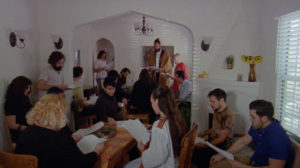
Ouroboros, 2017, Long métrage, vidéo HD et film 16mm, couleur, son
77 min
Courtesy Galerie Imane Farès
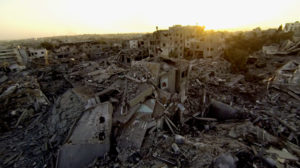
Ouroboros, 2017, Long métrage, vidéo HD et film 16mm, couleur, son
77 min
Courtesy Galerie Imane Farès
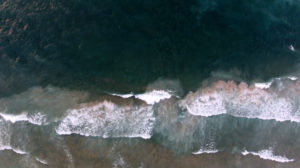
Ouroboros, 2017, Long métrage, vidéo HD et film 16mm, couleur, son
77 min
Courtesy Galerie Imane Farès
Every work by B. al-Sharif contributes to the portrait of a fragmented, disoriented, and collective subjectivity: if the “I” is often impersonal, the editing brings together different accounts that relate shared trajectories. Non-narrative, appealing to multiple senses and emotions, these films and videos show exiles and returns both possible and impossible. The very question of “return” is omnipresent, given that it haunts the lives of the Palestinian diaspora. Ouroboros, the title of the first full-length film by the artist (2017), means “eternal return”.
The regime of images provokes an ongoing question: which images of Palestine, and particularly of Gaza, should be produced? These images are already plentiful, especially those of war and of annihilation generated by the media and recycled and almost stereotyped to the point where history seems to repeat itself. As a form of resistance B. al-Sharif seeks to represent Palestinian life in a different way, even bearing witness to life itself, in scenes which could be banal (urbanism and roads, inhabitants and animals, the sea), but not without poetry and humour (Home Movies Gaza, 2013).
Multiple screens have proved remarkably powerful for juxtaposing and contrasting different images, for example before and after destruction. The violence and domination of the history of images are often referenced, be it Orientalist representations (A Philistine ; Les Barbares, 2023), the genre of Italian “telefoni bianchi”, promoting conservative social values and bourgeois materialistic success in 1930s Italy (Capital, 2022-2023), or “cannibal films” which show the extermination of peoples considered “primitive” (Field Guide To The Ferns, 2015).

A Land Without A People (1)-(10), 2018, impressions jet d’encre sur papier réalisées à partir de scans de négatifs couleur 120 mm
Courtesy Galerie Imane Farès

O’ Persecuted, 2014, Film 16 mm transféré en vidéo HD, couleur et son, 11 min 37 sec
Courtesy Galerie Imane Farès
Place and time are two central motifs in B. al-Sharif’s work, which pays particular attention to geography, space, and landscapes – whether urban or natural, real, lost, or utopian, diurnal or nocturnal – various multi-media manipulations decompose and reconstitute their forms and demarcations. An enclaved territory which must be made opened up, Palestine is placed in relation to other territories, those of diasporic life, others also marked by colonisation, imperialism, and authoritarianism (A Land Without A People, 2018). As for time, it is approached through history: archives are projected and re-filmed, even altered, introducing a distance in relation to the past that highlights the problematic nature of its reassessment (O, Persecuted, 2014). An example of her precise use of experimental film techniques, B. al-Sharif employs backwards time on multiple occasions as a way of tracing the course of history, leaving the spectator disoriented.
Finally, the body occupies a major place in her work: a body weighed down by the past, a body that blocks the spectator’s gaze, but also an independent body in movement, dancing, playing a musical instrument, desiring; a body which is often a woman’s. The cohabitation and superimposing of languages also play a key role, as does music, such as that of Fairouz, Abdel Halim Hafez, Nagat Al-Saghira and Nino Ferrer. Alongside fiction, which is particularly present in her recent works, these all contribute to B. al-Sharif’s project, as she explained it when describing Ouroboros : sharing “the possibility of hope beyond hopelessness”, questioning “what it means to be human when humanity has failed.”3
Antoine Idier
Born in Kuwait in 1983 to a Palestinian family, Basma al-Sharif grew up in France and the United States. She is a graduate of the University of Illinois, Chicago. Living and working nomadically, she has lived in Gaza, Paris, Cairo, Los Angeles, Amman and Berlin. She was a visiting professor at Le Fresnoy (2022-2023).
Her work has been shown in solo exhibitions at the Art Institute of Chicago, SALT Galata in Istanbul, the Center for Contemporary Art in Glasgow, the Museum of Contemporary Art in Toronto and the Sharjah Art Foundation, Sharjah. Her work has also been shown at numerous festivals and biennials, and is included in the collections of the Art Institute of Chicago, the Fonds d’art contemporain de Paris, the Kadist Foundation, the CNAP, the Frac Bretagne, the Sharjah Art Foundation, the Marcelino Botin Foundation and the Frac Corse.
Aily Nash, « Basma Alsharif. Working with, and through, conflict », Bomb Magazine, 12 March 2015.
2
Eyal Sivan, « Un observateur en attente de ne plus attendre », texte pour l’exposition Doppelgänging, Paris, galerie Imane Farès, 3 April-30 July 2014.
3
Synopsis of Ouroboros, 2017.
Tous droits réservés dans tous pays/All rights reserved for all countries.



